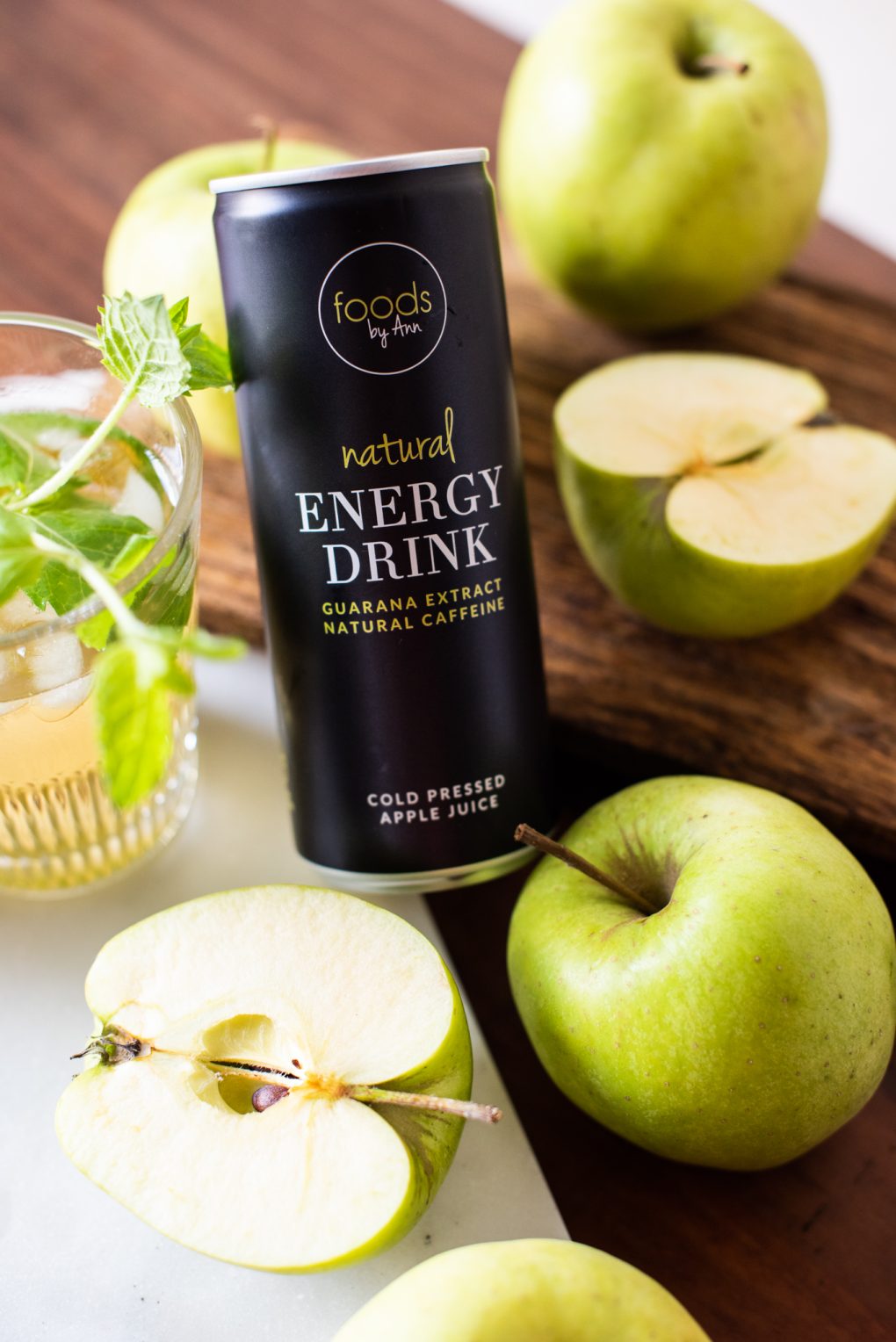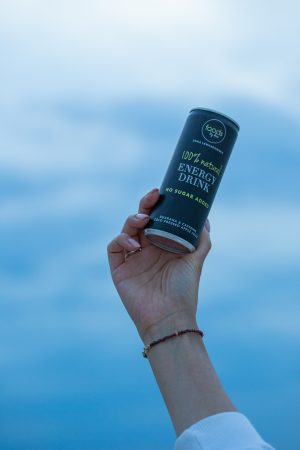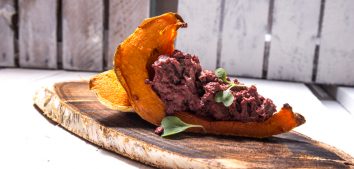
Healthy Energy – What’s Hidden in Energy Drinks?
Energy drinks are becoming more and more popular. They appeared on the Polish market in the 1990s and became popular with a lot of consumers. These are most often non-alcoholic, carbonated drinks that aim to stimulate the body through natural active substances. Let’s take a closer look at them
What Are Energy Drinks?
Energy drinks are generally available products for special nutritional purposes. Why? The answer is simple: their task is to counteract fatigue and thus stimulate our body to be active. Their aim is to improve our concentration, increase efficiency, and accelerate metabolism. Energy drinks are becoming more and more popular around the world. They are currently available in over 140 countries. Interestingly, the first energy drink was produced in Japan in the 1960s – it was “Lipovitan”, which contained 2-3g of taurine and 300 mg of arginine. However, in Poland, drinks of this type appeared for the first time later, around the 1990s. Today, access to them is extremely easy – they can be found in every grocery store, grocery discount store and gas stations.
Active Ingredients of Energy Drinks
Where does the stimulating effect of energy drinks come from? First of all, the biologically active substances they contain. These include caffeine, guarana extract, inositol, glucuronolactone, ginseng root extract, and B vitamins: niacin, pantothenic acid, vitamin B6 and B12. Most often, however, the basis for the action of energy drinks is the power of caffeine. Remember that energy drinks are not isotonic drinks! Unfortunately, energy drinks are often confused with isotonic drinks, i.e. drinks that are intended to replenish lost minerals. The purpose of energy drinks is always to increase the body’s efficiency; they do not have hydrating properties, so they should not be used to replenish electrolytes.
Contraindications
This is probably the key paragraph in this whole test! I have to emphasize the fact that energy drinks are not for everyone. Due to the active substances such as caffeine and the presence of sugars – sucrose, they are contraindicated for children and adolescents, pregnant and breastfeeding women, people suffering from diabetes, cardiovascular diseases and people sensitive to the effects of caffeine. Consumption of energy drinks is associated with increased platelet aggregation and impaired vascular endothelial function. As I have mentioned before, the beneficial effect of these drinks is to reduce drowsiness and thus improve concentration, e.g. in drivers. Since the first energy drink was introduced to the market, their popularity, diversity and availability have constantly been growing. Unfortunately, the market of products for special nutritional purposes is particularly dangerous for children and adolescents, who are increasingly reaching for this type of drink. The problem is related to their consumption and overuse by this group of consumers.
Some Statistics
Unfortunately, energy consumption statistics show that younger and younger people are consuming this type of drink. This is mostly due to the lack of awareness of the consumption of active substances, as well as to the easy availability of this type of products. The report of the National Institute of Public Health – National Research Institute shows that in Poland children aged 3-9 already drink energy drinks (2.1%). Therefore, the frequency of consumption of these products increases with age, in the group of teenagers (10-17 years old) it ranges from 27.4% among girls to even 35.7% among boys. In a European study, as many as 73% of Polish teenagers declared the consumption of energy drinks. Seeing the statistics in Poland, the Parliament decided to ban the sale of energy products to people under 18 years of age. The act will be introduced in Poland in January 2024. I am glad that the problem of excessive consumption of these products among children and young people was noticed and therefore responded to by introducing specific sales rules. What do you think of this law?
Negative Effects of Excessive Consumption of Energy Drinks
Energy drinks are certainly intended for adults only, but they should be consumed carefully and consciously in exceptional situations. They should not be treated as an everyday drink. It is crucial that they are not consumed by children and adolescents. Negative symptoms such as irritability and disorders of the nervous and cardiovascular systems caused by the consumption of caffeine by children occur when the consumption exceeds 3 mg/kg/day. Thus, for example, with a body weight of 50 kg, negative symptoms may appear after consuming 150 mg of caffeine, which is contained in 500 ml of an energy drink. Due to the high content of simple sugars in many energy drinks, they are classified as sweet carbonated drinks, hence their excessive consumption may lead to excess weight, obesity, destruction of tooth enamel, insulin resistance or even diabetes. They are used in alcoholic drinks, which is very harmful and dangerous to the body. Mixing energy drinks with alcohol may create a false impression of sobriety, thus leading to increased alcohol consumption and the risk of dangerous behavior. What’s more, energy drinks react with drugs, for example, antibiotics may reduce the breakdown of caffeine in the body, painkillers have a stronger effect in their presence, and sedative drugs have a weaker effect.
How Much Caffeine Do Energy Drinks Have?
Let me show you how much caffeine is in energy drinks compared to a cup of coffee. On average, one coffee contains 50-70 mg of caffeine. “Decaf” coffee may contain approximately 3 mg per cup. A large glass of cola provides us with 35-45 mg of caffeine. Energy drinks mainly contain about 32-48 mg of caffeine per 100 ml. Therefore, a can of such a drink (which usually has a capacity of 250 ml) provides 80-120 mg of caffeine at a time. Taking 500 mg, i.e. 5 cans of energy drink, may cause caffeine poisoning! If we refer to doses, the limit of caffeine consumption for an adult is quite high, which is 200-400 mg per kg of body weight, which for an average adult means taking 10-12 grams of pure caffeine, i.e. theoretically 30 liters of energy drinks. However, it should be taken into account that the additional guarana contained in drinks is also a source of caffeine as well as theobromine and theophylline. In total, the content of purine alkaloids in one can of the drink can reach up to 300 mg.
What About Sugar?
The amount of sugar in popular energy drinks may be shocking. Remember that a larger amount will not provide the body with a healthy dose of energy, because the sweetener used in these drinks is usually fructose. Energy is provided by caffeine and other substances similar to it. How much sugar do popular energy drinks have? On average, 250 ml or one can, contains approximately 27.5 g of sugar, or over 5 teaspoons of sugar!
Not All Energy Drinks Are Bad!
Remember that in situations requiring strong concentration or when you are very tired, there are no contraindications to using energy drinks. Everything in moderation and according to need.
Let me give you a hint and encourage you to take advantage of the natural energy boost that you can find on my Foods by Ann website. These are high-quality substitutes for popular energy drinks, which should delight you with their very natural, flavorful taste and fantastic stimulating properties.
Try them and see for yourself!
Summary
Energy drinks are products for special nutritional purposes which contain stimulants: caffeine, taurine, guarana extract, ginseng, etc. They should definitely not be overused by adults or used by children and adolescents. However, they are not a contraindicated drink and the best solution is to choose energy drinks with a good composition. Then we will certainly provide a refreshing stimulation for the body, choosing what is best and, above all, healthy! 🙂
Bibliography:
- Białas M., Łuczak H.,Jeżewska M.. Ocena zawartości kofeiny w wybranych napojach bezalkoholowych. Bromat. Chem. Toskykol. – XLIV, 2011, 3, 630–634
- Higgins J.P., Babu K.,Deuster P.A., Shearer J. Energy Drinks: A Contemporary Issues Paper. Special Communication, Volume 17, Number 2, February, 2018, 65-72.
- Joris C. Verster J.C., Benson S., Johnson J.S., Alford Ch., Godefroy S,B,, Scholey A. Alcohol mixed with energy drink (AMED): A critical review and meta‐analysis. Hum Psychopharmacol. 2018 Mar; 33(2).
- Kurzydem L. Energy drinks as a potential healts risk for childrem and adolescents. Journal of Physical Education & Health, 2019, vol.8 (13), 25-35.
- Richards G., Smith A.P.A Review of Energy Drinks and Mental Health, with a Focus on Stress, Anxiety, and Depression. J Caffeine Res. 2016 Jun 1; 6(2): 49–63.










Comments No Comments
Join the discussion…